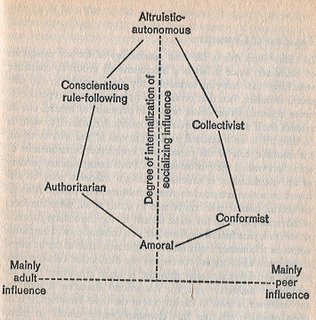To read War and Peace you don't need diagrams
 Perhaps the best kind of posts are those which you are not exactly sure why you are writing and what they are going to be about. With this in mind, I add at this point: this is not pre-prepared but going straight into the post. The main reason:to get it over quickly. I am timing myself and plan to get this over in 15 minutes. I have other fish to fry.
Perhaps the best kind of posts are those which you are not exactly sure why you are writing and what they are going to be about. With this in mind, I add at this point: this is not pre-prepared but going straight into the post. The main reason:to get it over quickly. I am timing myself and plan to get this over in 15 minutes. I have other fish to fry.Most people trying writing fiction will have come across the business of character. I am not alone, surely, in having to revise what this was all about, only to end up as I have done in a sideshow - albeit a rather interesting one - that of character in the sense of personality.
This diagram comes from Dererek Wright's The Psychology of Moral Behaviour. Titled 'the character typology', it shows the - yes - types of character. Clearly, this does not mean anyone fits into any one of these categories and not into any of the others. Or, indeed, that they are really distinct types: its a bit theoretical but based on much study of what humans are like.
Lack of diagrams in adult fiction: there have always been frontispieces and maps (I came across a website dedicated to all the maps in Denis Wheatley novels a few weeks ago) but have you ever seen a map or diagram or hand sketch in what they term serious fiction? Someone reading War and Peace doesn't need a diagram.
Courses in creative writing give the same sorts of advice on plotting, setting, character, and so on, but it is pretty much up to the apirant to provide the motivation to setting his words down on paper and keeping them coming. Many can't stop writing them down. I am of the type who writes a bit then goes away to study something (some essential facts or as in this case some things to do with personality over character). In the process the impetus is slowed but a feeling that one is getting deeper into what one is engaged in, compensates. There is often a satisfying feeling, a bit like watching the rain drip down windows on winter days from the warm dry side, that the journey is more important that arriving. The few pages written down really quickly are then overpowered by a charge into a variety of books - other fiction, technical books, almost random surfing. This can be frustrating, especially when later you realise if you had resisted the urge to look something up you might have written the customary 2000-3000 words.
Some writers will say how the ideas come: there is a surge, it is dissipated, then its on to something else. The thing doesn't stop (it can't, you will not stop thinking about it consciously or unconsciously) but the day is usually taken up with other things, with the hope, having slept on it, there is further flurry of creativity.
Many writers will draw diagrams (charts, Venns) to help them through the maze of what they writing, either right from the start or part way through, but how many need - yes really need - pictures which they can refer to when they need to overcome the urge to stop writing or begin wondering what it is they think they are writing about and why? Though sandwiched between the spaces on the diagram I have here, there are whole libraries of other words, written by all sorts, this as it is is the one which is going to help me a lot. I may explain a bit more later, or maybe I'll leave it at that. I can say having files of graphics I find very helpful. Just to be able to flick through an assortment of randomly arranged photographs, cuttings from colour magazines, photocopies of favoured paintings, or my own sketches of something ot other can do something to alter my state of mind in the required direction. It doesn't always work. One picture alone, say a a painting of light shining betweening an avenue of trees, can set my mind and emotions off along exactly the wrong course and spoilt everything.
I don't mind sharing this diagram: perhaps I'm altrusitic/autonomous? Hopefully it can be useful to someone else apart from students of psychology.
6 April 2006
Found this page: Psychological Types (after the Jung & briggs-Myers typology)
which is quite good fun with its coloured diagrams.

0 Comments:
Post a Comment
<< Home